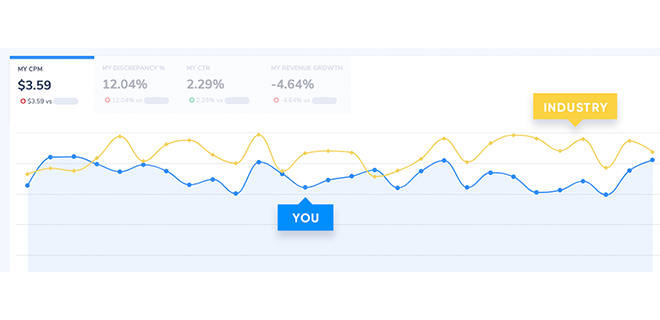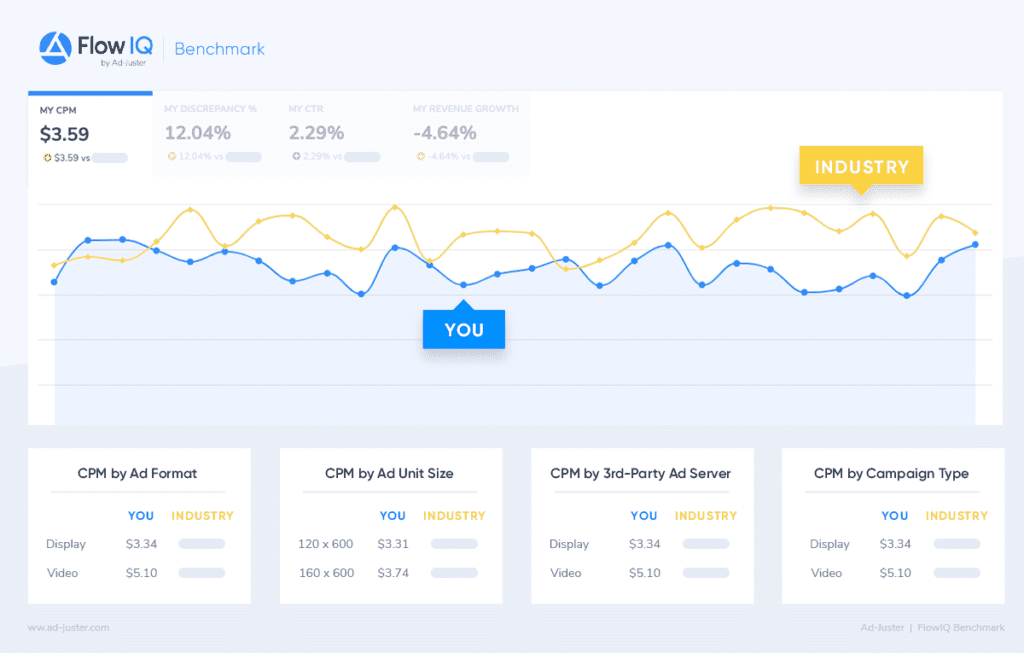
After years of playing guessing games about the competitive strengths and weaknesses of their direct-sold advertising, publishers now have a way to compare their individual performance against others in the industry, says Ad-Juster’s CMO Dan Lawton.
Since Ad-Juster works with the majority of the top 100 publishers, analyzing more than 1.2 trillion ad impressions and 2.3 billion clicks each month, we’re talking about a lot of data here.
We spoke with Lawton to learn more about his company’s FlowIQ Benchmark solution and how they believe it will help publishers better price their direct-sold inventory.
Lynne d Johnson: Why is a benchmarketing tool like this so important for the industry?
Dan Lawton: Forever, publishers had to make decisions and insights in a silo only using their own data sets and they had nothing to compare their performance against—not their competitors or the industry as a whole.
With a dynamic tool that they could actually look at and manipulate timeframes with actual data, not predictive data or forecasted data, but actual data. It’s the first time where publishers can now understand where they fit within their pricing strategies against their competitors.
Ad-Juster’s FlowIQ Benchmark solution offers publishers access to advertising data pricing that will enable them to:
- Refine pricing strategies based on real-market data with a clear picture of where inventory stands compared to similar publishers and products.
- Monitor trending partners, formats, and placements to identify new revenue opportunities, such as demand for specific ad sizes.
- Conduct data-driven planning and forecasting to understand what products are performing in the market, when click-through rates in key categories are likely to dip, or where resources should be directed for discrepancy optimization.
- And more.
Lynne d Johnson: Another thing that’s interesting is they can also monitor trends, for instance looking at what kind of formats are in demand. So it’s a trending tool as well?
Dan Lawton: Yes, we have both dimensions and metrics. So a metric example would be a CPM, but a dimension example would be an ad format or an ad size or delivery types like video vs display. So you’re able to understand all of your metrics with any time combination and your dimension choices that you choose.
Lynne d Johnson: Not only will it enable publishers to set more accurate ad prices, but I’m supposing it can be used for optimization as well?
Dan Lawton: Yes, I think that’s right. All the intended uses for the product will be determined by the publisher, but with our testing what we’ve seen is from an optimization standpoint they can actually see the discrepancy rates between the different ad serving vendors so when they’re setting up a campaign they can go look and say, “Hey, what’s my display discrepancy between DFP and Flashtalking server?”
And you can go there and say, well historically it’s 8%, so I’m gonna start there with my buffering rather than saying I’m going to put in a 15% buffer with a guess, you could actually know what your historicals are as a starting point. So that would be an example of how you could use this tool to optimize your ad operations.
Lynne d Johnson: Given all of the new privacy regulations and implementations across browsers, do you think we will see more direct-sold demand vs programmatic?
Dan Lawton: I believe anecdotally there’s a good case for that. I can tell you that the trend we’re seeing in the data, the number of direct-sold campaigns is going up slightly every year—not by tens-of-percents, but 3-5% per year. So it’s not dropping like has been predicted. That increase in direct-sold is happening in fewer and fewer clients, so direct-sold is being consolidated into the biggest and most premium publishers. Those are the ones experiencing the growth on the direct-sold side. Their content justifies premium sales prices and justifies the expense of the sales team.
Lynne d Johnson: Did you guys have a specific audience in mind when you built this product?
Dan Lawton: It was built with the AdMonsters community in mind, to be able to share and collaborate and have additional insights. We built this in collaboration with publishers and it took us almost four years to be able to talk to all of our clients and assure them that their data was going to be protected and we added language into our agreements that it was optional. Over that cycle, all of our clients except 3% have opted in to allow us to use this data—anonymize it, aggregate it and then share the product.
An on-demand webinar on how to analyze publisher direct-sold ad data using FlowIQ Benchmark is now available on Ad-Juster’s site.

